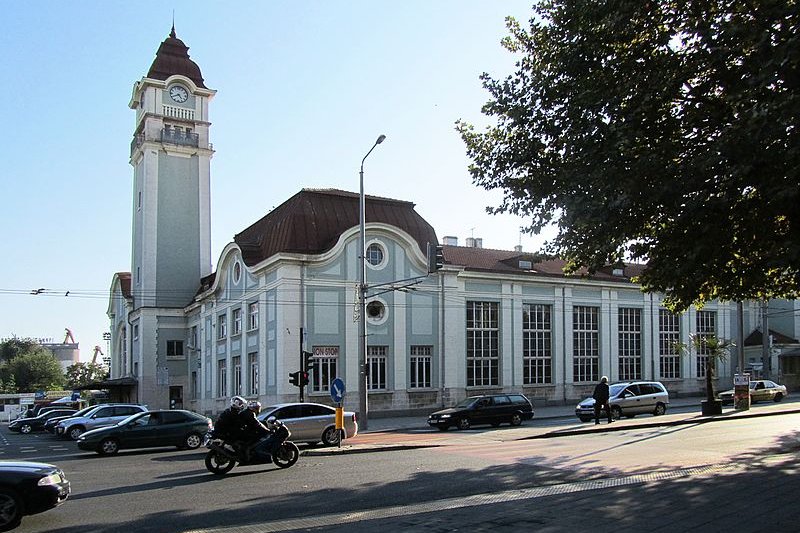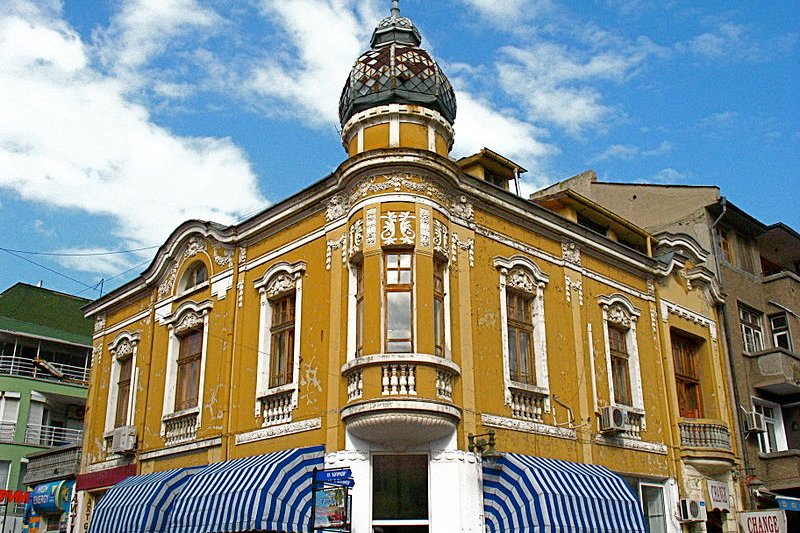 Central Railway Station, Burgas
Central Railway Station, BurgasSource: https://commons.wikimedia.org/wiki/File:Burgas_Bulgarien_PD_2011_18.JPG
Author: Bin im Garten

Burgas (Bulgarian: Бургас) is a city on the Bulgarian Black Sea Coast. With a population of 202,000 people (2011 estimate), it is the fourth largest city in Bulgaria. It is also the second largest Bulgarian city along the Black Sea Coast after Varna. The city is the provincial capital of Burgas Province, and a transportation and cultural hub as well as a tourist destination.
Burgas is located at the westernmost part of Burgas Bay which empties into the Black Sea. The city sits on the eastern part of the Burgas Plain, 389 km from Sofia and 335 km from Istanbul. It experiences a humid subtropical climate. The warmest month of the year is July, when the average high temperature rises to 27.7°C (81.9°F). Coldest month is January, when the average low temperature drops to -0.9°C (30.4°F). Burgas gets the most rain in October, at 64.1 mm (2.524 in) for that month.
The city of Burgas is fairly young by European standard, although the area has been inhabited since antiquity. The Romans under Emperor Vespasian established a military colony in the area. It was called Debeltum. In the Middle Ages, a fort was built on the site of present-day Burgas. It was called Purgos, and may have given its name to the city.
 Building on Aleko Bogoridi Boulevard, Burgas
Building on Aleko Bogoridi Boulevard, BurgasSource: https://commons.wikimedia.org/wiki/File:Burgas_Aleko_Bogoridi_Boulevard_Mihal_Orela_2.jpg
Author: Михал Орела

Burgas itself was only established in the 17th century. By the 19th century, it became an industrial city supported by trades in salt, iron, oil and chemicals. There was also an increase in maritime trade, enabling Burgas to become one of the chief ports for Bulgaria.
Today the port of Burgas is the largest in the country. Due to its position as a logistic hub, Burgas holds many trade-related exhibitions and festivals.
Visiting Burgas
You can get to Burgas by train from all the major cities of Bulgaria, as well as from Moscow and Kiev. There are also bus services to Burgas from Bulgarian cities as well as from Turkey and Greece.Places of Interest in Burgas
- Archaeological Museum
A small museum with a modest collection of prehistoric artifacts such as axe-heads, stone anchors and knives. - Armenian Church
A lovely church built in 1853 by the Armenian community of Burgas. - Burgas Art Gallery
Formerly a synagogue, this building today displays 18th and 19th century religious icons. - Church of Saints Kiril and Metodii
Church from the early 20th century designed by Italian architect Ricardo Toskanini. - Ethnographic Museum
Museum occupying a 19th century house. it exhibits a collection of traditional costumes, including the outlandish costumes of the Kukeri festival. - Lake Poda
Lake located outside Burgas. This is a sanctuary for birds, attracting a number of rare and endangered species. - Natural History Museum
Museum displaying a glittering array of minerals and crystals, as well as insects, crustaceans and stuffed animals.
 Latest updates on Penang Travel Tips
Latest updates on Penang Travel Tips

Copyright © 2003-2025 Timothy Tye. All Rights Reserved.

 Go Back
Go Back